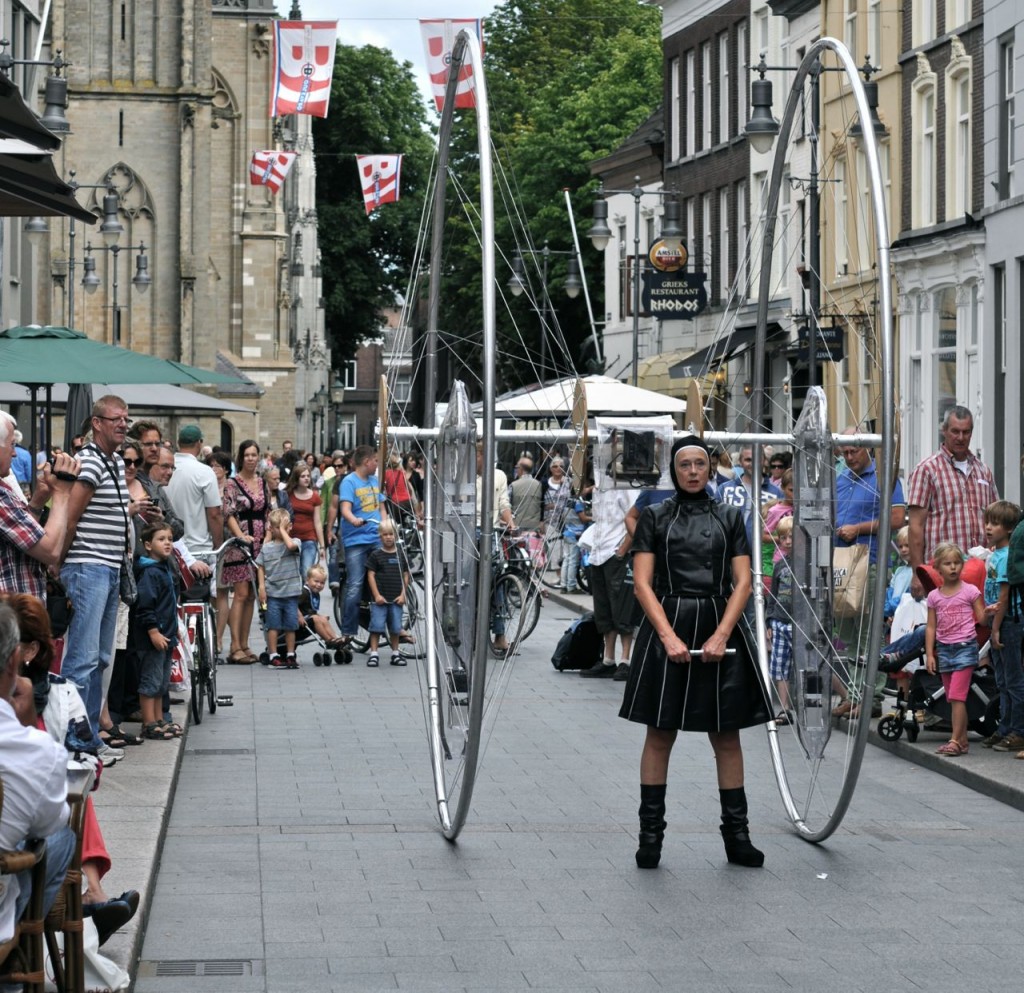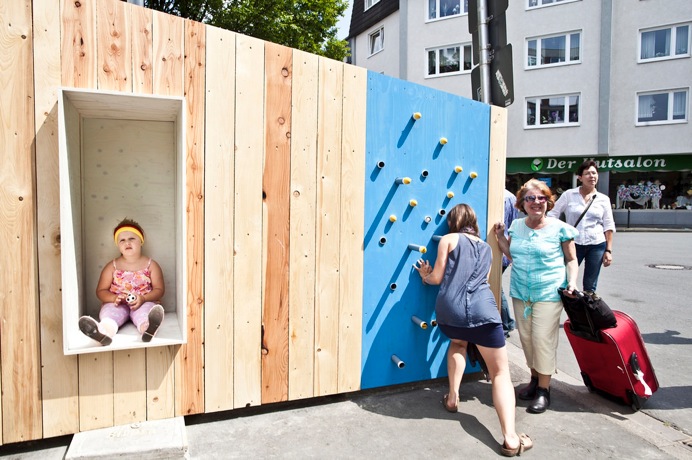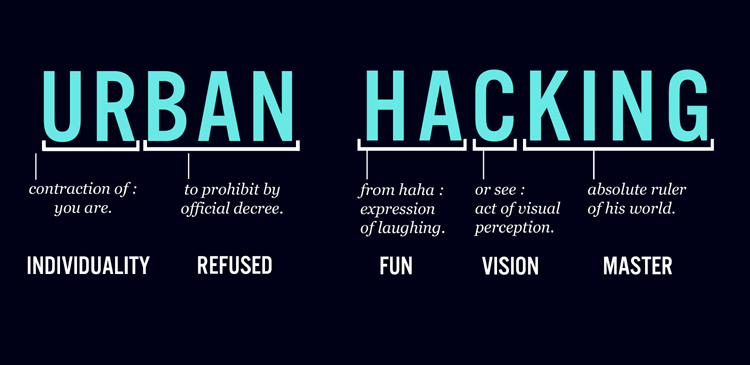|
|
PLAYUR – Exercises in Urban Play
- Written by Ragnhild Tronstad
- Wednesday, 13 August , 2014
Combining theory and practice, this closing event of the PLAYUR project invites you to explore playful urban engagement through a blend of lectures, workshops and performances. PLAYUR is part of the research project YOUrban: Social Media and Performativity in Urban Environments (2010-2014) at the Oslo School of Architecture and Design. All events are free and open for everyone. (Only the workshop on Tuesday requires subscription.) PLAYUR is supported by The Research Council of Norway.
Programme
Tuesday August 19th
17:00-20:00 St. Hanshaugen Challenge /*coding human behavior*/
Urban Game Design Workshop with Petr Svarovsky (CZ)
(See separate description below.)
Wednesday August 20th
AHO, Lille Auditorium
11:00-12:00 Social Media and Urban Play
Open lecture by Ragnhild Tronstad and Andrew Morrison (AHO, NO)
12:00-13:00 Visibility in the Invisible Playgrounds
Open lecture by Anna Hentschel (Invisible Playground, DE)
13:00-14:30 Lunch (bring or buy your own)
Possibility to watch performance program by Westerdals 1st year students in the KUBA area during lunchtime.
14:30-17:00 Introduction to Urban Hacking
Open lecture with Florian Rivière (FR), followed by a guided walk where we are invited to view our surroundings through the eyes of an urban hacker.
Knud Knudsens plass, St. Hanshaugen
16:00-19:00 The Follower
Interactive Performance with Pieter Verhees and Tet van der Donk (NL)
17:00-19:00 St. Hanshaugen Challenge /*coding human behavior*/
Urban Game with Petr Svarovsky (CZ)
ABOUT THE PRESENTERS
Invisible Playground is a collective of 6 young Berlin-based artists, game designers and academics. Formed in 2009, Invisible Playground creates site-specific games of various sizes and formats with a consistent theme of cultivating a new understanding of cities and society. Drawing from diverse influences ranging from experimental theatre and performance art to pop fiction, sports, board and video games, the collective develops playful experiences that grant participants entry onto the invisible playgrounds they walk across every day without noticing. Next to the creation of games, workshops and playtesting events, Invisible Playground curates the Playpublik Festival in Berlin. Invisible Playground has appeared by invitation at theatres, art spaces and festivals across Europe and beyond. Anna Hentschel has a background in scenography and fashion design and is working with Invisible Playground since 2011.In her talk “Visibility in the Invisible Playgrounds” her focus will be on how invisible playgrounds become visible and transform public spaces for the duration of games.
http://www.invisibleplayground.com
Florian Rivière is a French urban hacker. Since 2007, he has explored urban experimentations through different initiatives in cities around the world. By his experiences, he opens perceptions and connects spaces, objects, and actions to create new interactions with his urban living environment. His many impromptu interventions have the particularity to be spontaneous, fun, resilient, reversible and raw — exclusively made by accessible resources that surround him. As a lifestyle philosophy, he uses his 3D motto Drift, Divert, DIY that allows him to meet the unexpected, see the invisible, and achieve autonomy. Much like a child free of “one way” conditioning vision, he looks the world as modeling clay we can transform by our hands and our intuition without any specialized tools, concepts or other intermediaries. Play, furnishings, maps, instructions, poetry … all of these tactics can reconnect us to the free and infinite possibilities of our immediate reality. At the PLAYUR event, Riviére will give an introductory talk to the phenomenon urban hacking showing examples from his own practice, followed by an inspirational walk through the areas of Grünerløkka and St. Hanshaugen, inviting us to see them through the eyes of an urban hacker.
The Follower (installation/performance 2013): A lady and her robot are crossing the public street. We throw a glance in the near future and reveal a human relationship between humans and technology. The presence of the robot is fragile and careful by nature, but sometimes wild and unpredictable. Coincidental encounters with the audience will lead to intriguing interaction. Pieter Verhees is a Dutch artist who builds installations and artworks on the border of arts theatre and technology. Our rapidly evolving technology and the way it interferes with our human existence is an important subject of his work. How we evolve, how we sense and communicate our world. His installations invite the spectator to submerge and to experience a twist in ones perception. Tet van der Donk is a Dutch performer and director who connects theatre with visual art. As performer and communicator she examines the contact with her audience in a playful and humorous way.
http://www.pieterverhees.nl/
http://www.tetvanderdonk.nl/
Andrew Morrison has worked with interaction design research for over 20 years now and currently leads the Centre for Design Research at AHO as well as the YOUrban project into social media, performativity and the networked city. In the context of the PLAYUR project he has been experimenting with the persona of a female urban drone in the shape of a design fiction that provides points of view, critiques and critical communication about the rise of drone technologies, surveillance and human-machine relations. His other work is on speculative inquiry and the arctic, co-design and communication including multimodal narrative, doctoral education in design, online mediation of research in design, and techno-cultural views on transdisciplinary interaction design. His talk will be in dialogue with Ragnhild Tronstad’s.
http://designresearch.no/people/andrew-morrison
Ragnhild Tronstad is a senior researcher on the research project YOUrban: Social Media and Performativity in Urban Environments, based at the Oslo School of Architecture and Design, leading the sub-project PLAYUR. She holds a Ph.D. in media studies from the University of Oslo, and focuses her research on the intersections between new media art and aesthetics, games and performance studies. Reflecting her research interests in PLAYUR, her talk will address the various ways in which play may function as a mode to structure and performatively transform urban experiences.
http://designresearch.no/people/ragnhild-tronstad
Petr Svarovsky is a new media artist and designer. He decided to work in a zone between art, technology and science, in new media and beyond, which gives him the possibility to claim new areas and to investigate new ways of expression. He started with interactive sound installations in the early 90’s, and has worked with virtual reality technologies, the Internet and code art. Most recently, he has been using mobile technologies and researching the relationship between technology and human consciousness, especially the way that mobile Apps and games affects human social behavior. Svarovsky uses mobile and social media to create public interventions, events and challenges, as new forms of artistic expression. He has exhibited at Venice Biennial, Ars Electronica, FILE Festival and various international shows, presented internationally, e.g. at ISEA Conference, and was awarded Ars Electronica Honorary Distinction for interactive art in 1996. Svarovsky will run the workshop St. Hanshaugen Challenge /*coding human behavior*/, described below.
WORKSHOP St. Hanshaugen Challenge /*coding human behavior*/
by Petr Svarovsky (new media artist and designer, CZ)
Participants will learn basics about pervasive game design, aspects of its development and how their game can affect the public in urban space. Attendance at the workshop is by subscription only. There are only 20 places. Please sign up by mailing: ragnhild.tronstad@aho.no
Abstract
As argued in Software Studies, human behavior is nowadays to a large extent controlled by code. Coders – social network creators and game designers – have enormous power to control ways people act. Obviously, this can be used for good or bad purposes, however, we don’t yet know much about how. So, in the context of this workshop, let’s make a small experiment testing how we can affect public space with a simple game.
Playground: St. Hanshaugen park (http://bit.ly/1ouMoW2)
Medium: Locative (GPS based) mobile game
Platform: iOS, Android
Participants will learn basics about pervasive game design, aspects of its development and how their game can affect the public in urban space.
Required for workshop:
An idea WHAT you would like people to do in St. Hanshaugen park and WHY.
Recommended for workshop:
A smartphone (iOS or Android).*
Laptop.
Day 1 (3 hours)
Discussion about participants’ ideas.
A selection of one idea.
Game design based on the idea.
Game prototype development.
Day 2 (2 hours)
Game test in St. Hanshaugen park.
Closing discussion.
*) iPhone users are suggested to send their UDID to petrsvar@gmail.com prior the workshop if they want to play the game on their phone.
**) The game will be based on GPS framework, prepared beforehand by Petr for rapid prototyping.




